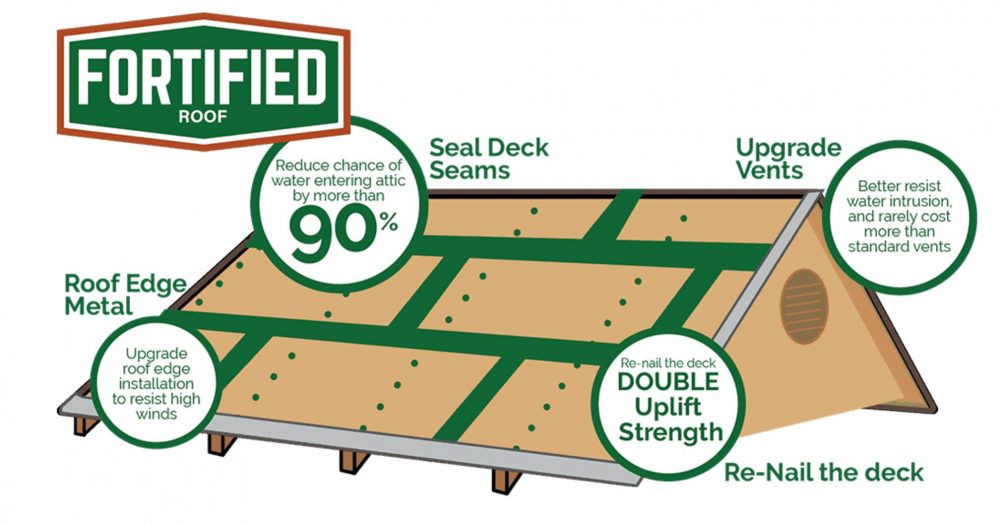One way to increase the protection of your home, related to shingle installation, is to have the shingles installed to the requirement of Insurance Institute for Business & Home Safety (IBHS) “Fortified Roof” standards.
Fortified Roofs or Fortified Homes is a relative new term. The research and development of the Fortified programs started as a way to better construct homes related to hurricane damage along the gulf coast and Florida. The major homeowner’s insurance companies offer reduced premiums for homes and/or roofs constructed to the Fortified standards.
The Fortified Roof programs requires that the shingles be installed by a Fortified approved roofer and inspected by a Fortified Roof evaluator. Depending on the area that you live, the number of certified roofers and evaluators may be limited. Additional information related to installation, contractors and certification is available at https://fortifiedhome.org/.
Even if you choose not to have a Fortified Roof installed, the Fortified Roof standards require a few simple improvements to shingle installation that should be applied to any shingle roofs at minimum or no additional cost. Below are a few of those items.
- Install the metal drip edge over the roofing felt/underlayment around the entire perimeter of the roof. Drip edge should be nailed at 4” on center with a staggered nailing pattern.
- Double layer (starter layer with half sheet) the 30# roofing felt/ASTM D226 or D4869 underlayment. Nail felt/underlayment at 6” on center along the edge and 12” single row in the field.
- Prior to installing roof felt/underlayment, tape the joints of the roof sheathing with a modified bitumen, butyl or acrylic type. If you choose to tape the sheathing, it is not commonly installed by builders/roofers, so expect additional cost for the installation of this tape.
- Use stainless steel fasteners for shingle and underlayment installation in areas exposed to salt air i.e., along the ocean and saltwater sounds.
The Fortified program is an outstanding program which offers added protections to your roofing system and that needs to be applied to homes constructed in all coastal areas. Hopefully, the number of certified contractors and evaluator will continue to increase in eastern North Carolina.

